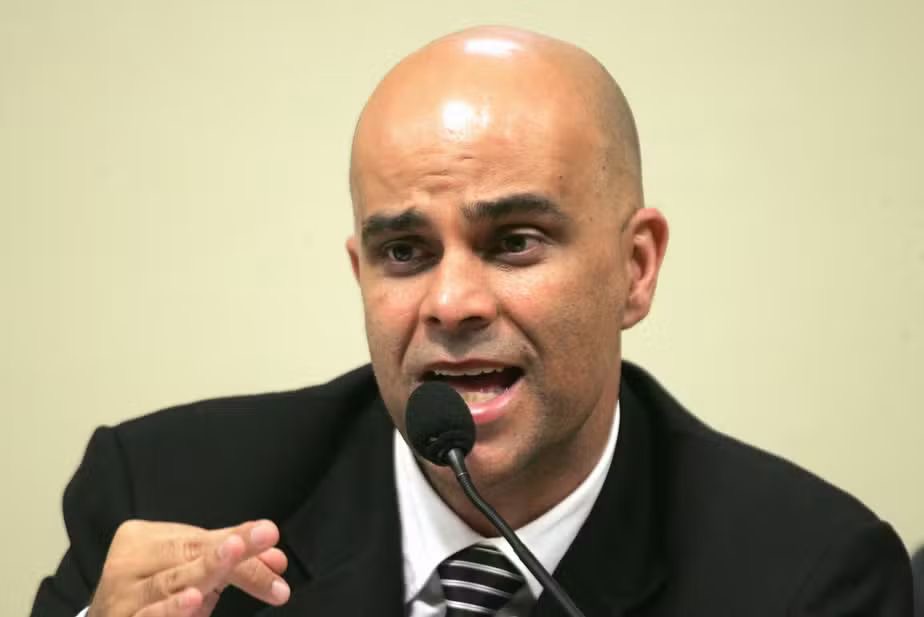
Your taxes can be affected if your SSN is used to file a fraudulent return or to claim a refund or credit. Go to IRS.gov/Account to securely access information about your federal tax account. Go to IRS.gov/SocialMedia to see the various social media tools the IRS uses to share the latest information on tax changes, scam alerts, initiatives, products, and services.

Generally, you must get IRS approval to change your method of accounting. You must generally file Form 3115, Application for Change in Accounting Method, to request a change in your method of accounting for depreciation. You claimed the incorrect amount on property placed in service by you in tax years ending before December 30, 2003. You have not adopted a method of accounting for property placed in service by you in tax years ending after December 29, 2003. You must submit a separate Form 4562 for each business or activity on your return for which a Form 4562 is required..
Depreciation is an annual allowance given to a trade or business for exhaustion, wear and tear, and normal obsolescence of assets. An asset’s basis must be reduced by the depreciation allowed for a particular year, even if depreciation was not claimed by the taxpayer for that particular year. If the taxpayer elects to expense IRC section 179 qualifying property, the limitation of a total IRC section 179 deduction is $25,000 regardless of the number of the taxpayer’s business enterprises and income-producing properties.
Im Leasing, Should I Use The Standard Mileage Or Actual Deduction?
You can use this worksheet to help you figure your depreciation deduction using the percentage tables. Then, use the information from this worksheet to prepare Form 4562. You must apply the table rates to your property’s unadjusted basis each year of the recovery period. Unadjusted basis is the same basis amount you would use to figure gain on a sale, but you figure it without reducing your original basis by any MACRS depreciation taken in earlier years. However, you do reduce your original basis by other amounts, including the following. Instead of using either the 200% or 150% declining balance methods over the GDS recovery period, you can elect to use the straight line method over the GDS recovery period.
- The Wisconsin adjusted basis of the assets on January 1, 2014 in the hands of the partners is the same as the adjusted basis determined for federal tax purposes.
- The original cost of property, plus certain additions and improvements, minus certain deductions such as depreciation allowed or allowable and casualty losses.
- Go to IRS.gov/Forms to view, download, or print all of the forms, instructions, and publications you may need.
- Use Form 4562 to figure your deduction for depreciation and amortization.
- To claim depreciation, you must usually be the owner of the property.
Of the 12 machines, nine cost a total of $135,000 and are used in Sankofa’s New York plant and three machines cost $45,000 and are used in Sankofa’s New Jersey plant. Assume this GAA uses the 200% declining balance depreciation method, a 5-year recovery period, and a half-year convention. Sankofa does not claim the section 179 deduction and the machines do not qualify for a special depreciation allowance. As of January 1, 2021, the depreciation reserve account for the GAA is $93,600.
Types Of Modified Accelerated Cost Recovery Systems Macrs
On the other hand, heavy vehicles with a GVW rating above 6,000 pounds that are used more than 50% for business can deduct 100% of the cost. Depreciation is complicated, so many business owners have questions about when and how bonus depreciation applies to their business. Property that has a useful life of 20 years or less. This includes vehicles, equipment, furniture and fixtures, and machinery. Bonus depreciation is a way to accelerate depreciation.
- This post provides a brief summary of the general rules for 2021.
- Thus, the amount of any 2021 disallowed section 179 expense deduction attributable to qualified section 179 real property will be reported on line 13 of Form 4562.
- If your business use of the car had been less than 100% during any year, your depreciation deduction would have been less than the maximum amount allowable for that year.
- For the second year, the adjusted basis of the computer is $4,750.
- The Secretary shall, by regulations, provide for recapturing the benefit under any deduction allowable under subsection with respect to any property which is not used predominantly in a trade or business at any time.
Such term shall not include any property described in section 50 (other than paragraph thereof). Such election shall be made in such manner as the Secretary may by regulations prescribe. Which is rated at not more than 14,000 pounds gross vehicle weight. In 2018, I was winding down a stint in investor relations and found myself newly equipped with a CPA, added insight on how investors behave in markets, and a load of free time. My job routinely required extended work hours, complex assignments, and tight deadlines. Seeking to maintain my momentum, I wanted to chase something ambitious. All amounts reported on PA-40, Individual Income Tax returns and accompanying schedules are subject to verification and audit by the Pennsylvania Department of Revenue.
What Is Basis From A Tax Perspective?
She looks back at Table B-1 and uses asset class 00.11 for the desk. The desk has a 10-year class life and a 7-year recovery period for GDS. If she elects to use ADS, the recovery period is 10 years. For the cash register, she uses asset class 57.0 because cash registers are not listed in Table B-1 but it is an asset used in her retail business. The cash register has a 9-year class life and a 5-year recovery period for GDS. If she elects to use the ADS method, the recovery period is 9 years. On August 1, 2020, Julie Rule, a calendar year taxpayer, leased and placed in service an item of listed property.
Paying taxes four times a year sounds onerous, but it actually eases the burden of year end taxes. If that isn’t enough of an incentive, the penalties for not paying quarterly taxes on time should convince you to get it right. This portion of the site is for informational purposes only.
- As a rideshare driver, deducting the expenses related to the business use of your vehicle can yield significant tax savings.
- You must use the applicable convention in the year you place the property in service and the year you dispose of the property.
- If your business use of listed property drops below 50 percent in any year after the first year you use the property in your business, you may have to pay back some of the excess depreciation you claimed.
- This property is generally limited to tangible, depreciable, personal property which is acquired by purchase for use in the active conduct of a trade or business.
Once your Schedule LEP is processed, the IRS will determine your translation needs and provide you translations when available. If you have a disability requiring notices in an accessible format, see Form 9000. Go to IRS.gov/WMAR to track the status of Form 1040-X amended returns. Use the Offer in Compromise Pre-Qualifier to see if you can settle your tax debt for less than Tax Depreciation Section 179 Deduction and MACRS the full amount you owe. For more information on the Offer in Compromise program, go to IRS.gov/OIC. Apply for an online payment agreement (IRS.gov/OPA) to meet your tax obligation in monthly installments if you can’t pay your taxes in full today. Once you complete the online process, you will receive immediate notification of whether your agreement has been approved.
Wisconsin Conformity Resources
Accelerating depreciation also lowers the book value of your assets, which can affect balance sheet ratios that may impact your ability to borrow money. Also, should you choose to sell that asset, you may have to pay tax on the gain. While bonus depreciation offers sweeping savings, a Section 179 deduction can be used to fine-tune your company’s bottom line. Section 179 depreciation is capped by the IRS ($1,040,000 in 2020) and is reduced by the dollar amount of purchases that exceeds the IRS threshold ($2,580,000 in 2020). Bonus depreciation has no annual limit on the deduction.

You continue to depreciate the account as if the disposition had not occurred. This is figured by multiplying the adjusted basis of $600 ($1,000 − $400) by 40%, then multiplying the $240 result by 5/12. For a short tax year not beginning on the first day of a month and not ending on the last day of a month, the tax year consists of the number of days in the tax year. You determine the midpoint of the tax year by dividing the number of days in the tax year by 2.
Calculation Of Net Income Loss From The Operation Of A Business Profession Or Farm
However, there is currently no business income limitation for bonus depreciation, so a business could take a net loss by taking advantage of bonus depreciation. Useful life is the accounting estimate of the number of years an asset is likely to remain in service for the purpose of producing income.
In general, figure taxable income for this purpose by totaling the net income and losses from all trades and businesses you actively conducted during the year. Net income or loss from a trade or business includes the following items. Silver Leaf, a retail bakery, traded in two ovens having a total adjusted basis of $680, for a new oven costing $1,320. They received an $800 trade-in allowance for the old ovens and paid $520 in cash for the new oven. In April, Frank bought a patent for $5,100 that is not a section 197 intangible. He depreciates the patent under the straight line method, using a 17-year useful life and no salvage value.

He does not include the value of the personal use of the company automobiles as part of their compensation and he does not withhold tax on the value of the use of the automobiles. This use of company automobiles by employees is not a qualified business use.
Bonus Depreciation Under The Tax Cuts And Jobs Act
Observation.Congress intended—but failed—to give qualified improvement property a 15-year MACRS recovery period, which would have qualified this asset category for 100% bonus depreciation. Thus, absent a technical correction, which many commentators have called for, qualified improvement property does not qualify for 100% bonus depreciation. Under current law’sCode Sec. 168, qualified improvement property is 39-year property under MACRS, and therefore ineligible for 100% bonus depreciation which applies only to property with a MACRS recovery period of 20 years or less. In addition, if the asset is listed property, it must be used more than 50% of the time for business to qualify for bonus depreciation. Listed property consists of automobiles and certain other personal property.
Your options are the standard mileage ratemethod or the actual expensesmethod. If you purchase fixed assets for your business, one bonus you want to get familiar with is bonus depreciation. Here’s a look at what you need to know about this valuable tax-saving tool. The Section 179 deduction is not allowed for land or land improvements, leased property, or assets with less than 50% business use. The election out of bonus depreciation must be made by the due date of the return for the tax year in which bonus depreciation property is placed in service.
They reduce the $1,050,000 dollar limit by the $300,000 excess of their costs over $2,620,000. For the first 12 months after the property is transferred to the lessee, the total business deductions you are allowed on the property are more than 15% of the rental income from the property.
For each recovery year included, multiply the depreciation attributable to that recovery year by a fraction. The fraction’s numerator is the number of months that are included in both the tax year and the recovery year. The allowable depreciation for the tax year is the sum of the depreciation figured for each recovery https://accountingcoaching.online/ year. Under MACRS, Tara is allowed 4 months of depreciation for the short tax year that consists of 10 months. The corporation first multiplies the basis ($1,000) by 40% to get the depreciation for a full tax year of $400. The corporation then multiplies $400 by 4/12 to get the short tax year depreciation of $133.
For information about depreciating your home office, see Pub. If you lease property to someone, you can generally depreciate its cost even if the lessee has agreed to preserve, replace, renew, and maintain the property. You made a down payment to purchase rental property and assumed the previous owner’s mortgage.
The total of all money received plus the fair market value of all property or services received from a sale or exchange. The amount realized also includes any liabilities assumed by the buyer and any liabilities to which the property transferred is subject, such as real estate taxes or a mortgage. Generally, for the section 179 deduction, a taxpayer is considered to conduct a trade or business actively if he or she meaningfully participates in the management or operations of the trade or business. A mere passive investor in a trade or business does not actively conduct the trade or business. Qualified property, the maximum deduction is $3,160.
Rules For Vehicle Depreciation And Expensing
The general depreciation system is the most commonly used modified accelerated cost recovery system for calculating depreciation. Note that the derived tax depreciation is not recorded in the financial statements, as these statements calculate depreciation using the straight-line depreciation method or some other form of accelerated cost depreciation method. The election must cover all property in the same property class, and once made, that election can never be changed.

 Famosos2 semanas ago
Famosos2 semanas ago
 Entretenimento2 semanas ago
Entretenimento2 semanas ago
 Entretenimento2 semanas ago
Entretenimento2 semanas ago
 Famosos2 semanas ago
Famosos2 semanas ago
 Famosos2 semanas ago
Famosos2 semanas ago
 Famosos2 semanas ago
Famosos2 semanas ago
 Famosos1 semana ago
Famosos1 semana ago
 Famosos2 semanas ago
Famosos2 semanas ago








